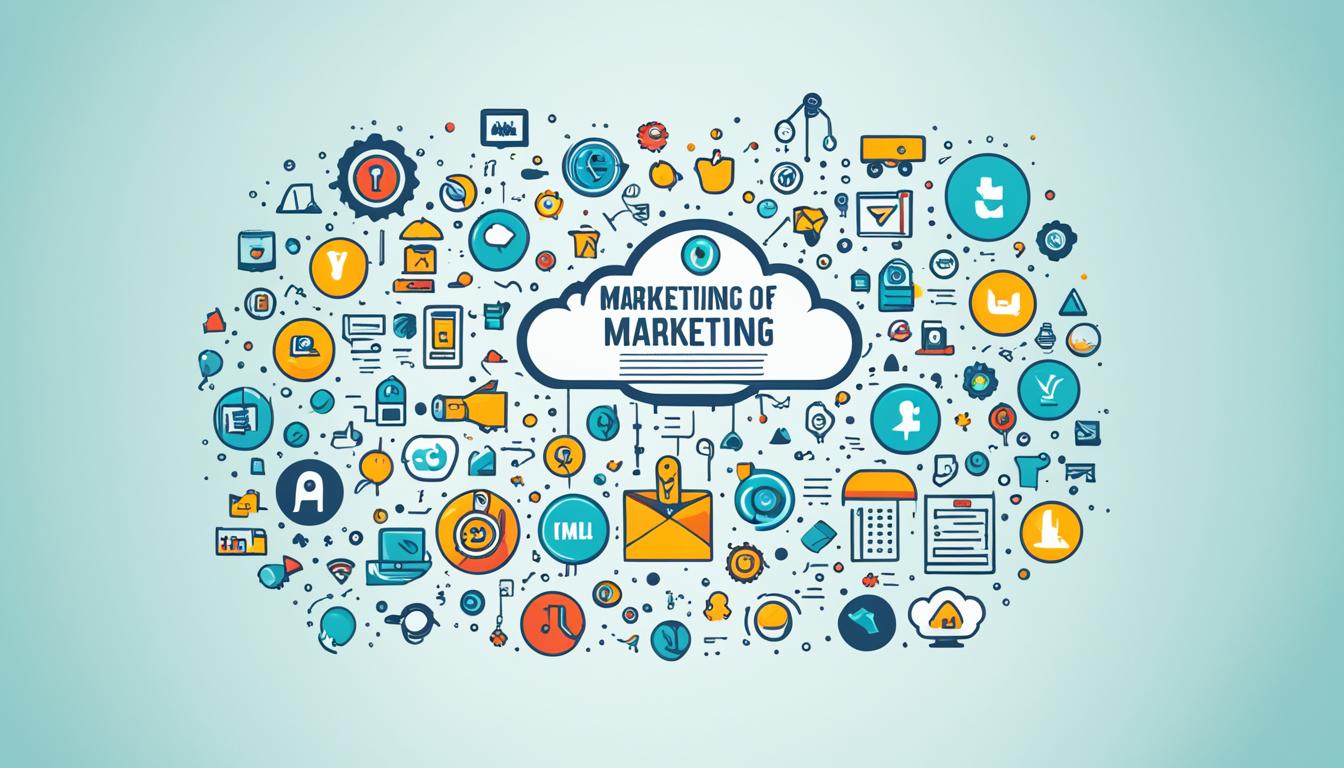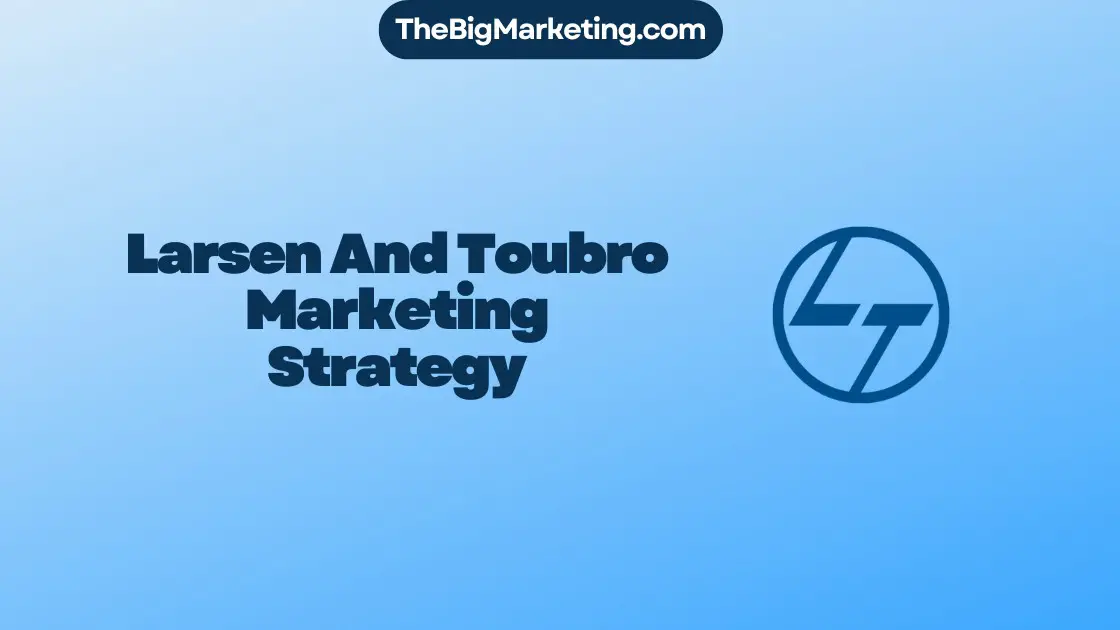In order to have a successful SAAS product, it is essential to have a solid marketing strategy. Without a strategy in place, many SAAS companies fail to attract the right audience and generate revenue. This article will provide a comprehensive guide to creating an effective SAAS marketing strategy in 2024.
Key Takeaways:
- An effective SAAS product marketing strategy is crucial for success in the competitive 2024 market.
- Without a solid marketing strategy, SAAS companies struggle to attract the right audience and generate revenue.
- By defining the target audience, understanding the competition, setting goals, and implementing effective marketing strategies, companies can achieve sustainable growth.
- Regular measurement and improvement are essential to continuously optimize SAAS marketing efforts.
- Refining SEO and content marketing strategies can enhance existing SAAS marketing efforts and improve performance.
What is a Product Marketing Strategy?
A product marketing strategy is a plan that outlines how a company will market and sell its SAAS product. It serves as a roadmap that helps identify the target audience, highlight the value the product offers, and articulate why customers should choose it over competitors. In essence, a product marketing strategy is like a business plan that guides the direction of a company’s products and services.
By developing a comprehensive product marketing strategy, SAAS companies can effectively communicate the unique features and benefits of their product to potential customers. This strategy takes into account various elements, including market research, competitive analysis, target audience identification, and messaging. A well-defined product marketing strategy enables companies to position their SAAS product in a way that resonates with the intended audience and drives business growth.
One of the key aspects of a product marketing strategy is defining the unique selling points of the SAAS product. This involves identifying the product’s core features, functionalities, and competitive advantages. By clearly articulating these unique selling points, companies can differentiate their product from others on the market and attract their target audience.
The Importance of a Product Marketing Strategy
A well-crafted product marketing strategy serves as a foundation for the success of a SAAS product. It empowers companies to make informed decisions about pricing, positioning, messaging, and distribution channels. A strong product marketing strategy can help businesses:
- Effectively communicate the value proposition of their SAAS product
- Identify target audience segments and tailor marketing efforts to reach them
- Create compelling messaging that resonates with customers
- Establish competitive differentiation in a crowded market
- Optimize marketing spend by focusing on the most effective channels
- Drive customer acquisition and retention
Overall, a product marketing strategy plays a critical role in ensuring the success and growth of a SAAS product. It provides a roadmap for companies to navigate the competitive landscape, connect with their target audience, and drive business results.
How to Build a Successful SAAS Product Marketing Strategy?
Building a successful SAAS product marketing strategy involves several crucial steps. By following these steps, companies can effectively attract their target audience, understand market dynamics through thorough research, position their product strategically, establish achievable goals, and implement tailored marketing strategies for optimal results.
Define the Target Audience and Conduct Market Research
The first step in building a successful SAAS product marketing strategy is to define the target audience. Understanding the needs, preferences, and pain points of the target audience is essential for creating a compelling marketing message and value proposition. To achieve this, conducting in-depth market research is crucial.
Market research enables companies to gather valuable insights about their target audience, including demographics, behavior patterns, and purchasing habits. Surveys, interviews, and user groups can help gather qualitative data, while data analysis tools offer valuable quantitative data. By combining both approaches, companies can form a comprehensive understanding of their target audience.
Positioning and Setting Realistic Goals
After identifying the target audience, the next step is to determine the positioning of the SAAS product in the market. This involves defining the unique selling proposition (USP) and value proposition that set the product apart from the competition. By highlighting the product’s key benefits and differentiators, companies can position their offering effectively.
Setting realistic goals is another crucial aspect of building a successful SAAS product marketing strategy. These goals should be specific, measurable, attainable, relevant, and time-bound (SMART). Defining key performance indicators (KPIs) ensures that progress towards these goals can be tracked and measured accurately.
Map Out Marketing Strategies for Each Stage of the User Cycle
For an effective SAAS product marketing strategy, it is essential to map out tailored marketing strategies for each stage of the user cycle. This includes acquiring new customers, activating them, driving adoption of the product, and retaining existing customers.
Different marketing strategies can be employed to address each stage of the user cycle. These may include optimizing the website for lead generation and conversion, implementing targeted social media campaigns, leveraging content marketing to educate and engage users, and nurturing customer relationships through personalized email marketing campaigns.
By employing strategies that align with each stage of the user cycle, companies can enhance customer acquisition, increase user activation, drive product adoption, and improve customer retention.
By following these steps, companies can build a successful SAAS product marketing strategy that effectively targets the right audience, utilizes in-depth market research, positions the product strategically in the market, sets achievable goals, and implements tailored marketing strategies for optimal results.
Determine the Target Audience
To build an effective SAAS product marketing strategy, it is crucial to understand the target audience and their needs. By defining a user persona, which is a research-backed representation of the ideal customer, you can tailor your messaging strategy to resonate with your target audience. Creating a user persona involves conducting thorough research and qualitative tests to gather insights into your audience’s demographic, psychographic, and behavioral characteristics.
Research and Qualitative Tests
In order to create an accurate user persona, it is important to conduct in-depth research and gather qualitative data. This can be achieved through surveys, in-person interviews, focus groups, and user testing. By engaging directly with potential customers, you can gain valuable insights into their motivations, pain points, and preferences.
During the research phase, consider asking questions that delve into their demographics, such as age, gender, occupation, and location. Additionally, it is essential to uncover their psychographic attributes, such as interests, values, attitudes, and lifestyle choices. By understanding the psychological and emotional factors that influence their decision-making process, you can tailor your marketing messages accordingly.
Qualitative tests are also valuable in gaining a deeper understanding of your target audience. Through in-person interviews or focus groups, you can observe their behavior firsthand and gather valuable insights that go beyond what traditional quantitative research can provide. These qualitative tests can help you uncover pain points, frustrations, and unmet needs that your SAAS product can address.
User Persona Development
Once you have conducted thorough research and qualitative tests, it’s time to create your user persona. A user persona is a fictional character that represents your target audience and encapsulates their key characteristics. It should include relevant demographic information, psychographic attributes, goals, challenges, and preferences related to your SAAS product.
When developing your user persona, it is important to make it as specific and detailed as possible. This enables you to create targeted marketing messages that resonate with your ideal customers. Here’s an example of how a user persona for a SAAS project management tool might look:
| Name: | Emily Thompson |
|---|---|
| Age: | 32 |
| Occupation: | Marketing Manager |
| Goals: | Streamline project management processes, improve team collaboration |
| Challenges: | Lack of visibility into project progress, difficulty coordinating tasks with remote team members |
| Preferences: | Intuitive user interface, integrations with popular productivity tools |
By creating and referring back to your user persona throughout the SAAS product marketing strategy development process, you can ensure that your messaging, positioning, and marketing efforts are aligned with the needs and preferences of your target audience.
Identify the Competition with Market Research
Conducting market research is crucial for identifying the competition, gaining insights into their strengths and weaknesses, and analyzing their marketing strategies. This research enables you to position your SAAS product effectively and address the unique needs of your target audience.
When conducting market research, start by searching for similar products in your industry. Look for direct competitors that offer similar solutions to your target customers. Analyze their offerings, pricing, and messaging to identify their strengths and weaknesses.
Another valuable method is surveying your customer base. Gather feedback on their experiences with both your product and your competitors’ products. Understand what aspects they appreciate and what areas they find lacking.
Additionally, analyzing your competition’s online presence is crucial. Explore their website, social media profiles, and online reviews. Assess their messaging, branding, and customer engagement strategies. Identify their unique selling points (USPs) and how they differentiate themselves from others in the market.
By thoroughly researching and understanding your competition, you can refine your own product marketing strategy. This knowledge will help you emphasize your strengths, address your weaknesses, and position yourself as the preferred choice in the market.
Example Table: Competitor Analysis
| Competitor | Strengths | Weaknesses | Online Presence |
|---|---|---|---|
| Competitor A | Strong customer base | Outdated user interface | Active on social media, high website traffic |
| Competitor B | Innovative features | Higher pricing compared to the market | Frequent blog updates, positive online reviews |
| Competitor C | Robust integration options | Limited customer support | Well-optimized website, active community forums |
Define Your Positioning
A successful SAAS product marketing strategy begins with defining your positioning in the market. Positioning refers to the unique space your product occupies within the industry and how it differentiates itself from competitors. This involves identifying your SAAS product’s unique selling proposition (USP) and value proposition, which are key elements that set your product apart and address the customer’s problem.
Your unique selling proposition is what makes your SAAS product stand out from others. It could be a specific feature, functionality, or benefit that no other product offers. By clearly communicating your product’s unique selling proposition, you can emphasize its value and attract the attention of your target audience.
The value proposition of your SAAS product is the unique value it provides to customers. It answers the question, “Why should customers choose your product?” Your value proposition should clearly articulate the benefits and advantages that your product offers, such as increased efficiency, cost savings, or improved productivity.
By defining your positioning and effectively communicating your unique selling proposition and value proposition, you can attract the right audience and establish your SAAS product as the go-to solution in the market.
| Benefits of Effective Positioning | Importance of Unique Selling Proposition (USP) | Advantages of Value Proposition |
|---|---|---|
| 1. Attracts the right audience | 1. Sets your product apart from competitors | 1. Clearly communicates the benefits |
| 2. Establishes your brand identity | 2. Captures customer attention | 2. Demonstrates the value your product offers |
| 3. Differentiates your product | 3. Emphasizes your product’s unique features | 3. Addresses customer pain points |
| 4. Builds trust and credibility | 4. Increases customer perception of value | 4. Influences customer purchasing decisions |
These elements lay the foundation for an effective SAAS product marketing strategy. By defining your positioning, unique selling proposition, and value proposition, you can develop targeted messaging, create compelling marketing campaigns, and drive the success of your SAAS product in the marketplace.
Set Realistic Goals and Establish KPIs
Setting realistic goals and establishing Key Performance Indicators (KPIs) are essential components of a successful SAAS product marketing strategy. These goals should be specific, measurable, and aligned with the overall business objectives to ensure a clear direction for marketing efforts.
When defining goals, it is important to consider the desired outcomes and milestones that will indicate progress. For example, goals may include increasing customer acquisition by a certain percentage within a specified timeframe or improving customer retention rates.
Once goals are established, it is crucial to identify and define relevant KPIs that will track progress towards these goals. KPIs are measurable metrics that provide valuable insights into the effectiveness and efficiency of marketing strategies. This can include metrics such as conversion rates, customer lifetime value, and customer acquisition costs.
By regularly monitoring and analyzing these KPIs, marketing teams can gain valuable insights into the performance of their strategies and make data-driven decisions to optimize their efforts. Adjustments can be made to marketing tactics, channels, messaging, and targeting to improve performance and drive better results.
Map Your Marketing Strategies
To ensure the success of your SAAS product, it is essential to map out effective marketing strategies for each stage of the user cycle: acquisition, activation, adoption, and retention. By implementing targeted strategies at each stage, you can attract new users, activate their interest, encourage adoption of your product, and retain existing customers.
At the acquisition stage, focus on optimizing your website to capture the attention of potential users. Utilize search engine optimization (SEO) techniques to improve your website’s visibility in search results and leverage social media marketing to reach a wider audience. Consider running paid advertising campaigns to increase brand awareness and drive traffic to your website.
Once you have acquired new users, it’s important to activate their interest in your product. Implement email marketing campaigns to nurture leads and provide valuable content that showcases the benefits and features of your SAAS product. Use personalized onboarding experiences to guide users through the initial setup process and help them explore the full potential of your product.
After activation, focus on encouraging adoption of your SAAS product. Offer resources, tutorials, and support to help users fully utilize your product’s features. Implement gamification techniques to increase user engagement and incentivize them to continue using the product. Regularly communicate with your users through email campaigns, newsletters, and targeted messaging to reinforce the value of your product.
Retention of existing customers is crucial for long-term success. Provide excellent customer support and proactive assistance to address any issues or concerns. Offer personalized recommendations and upsell opportunities based on user behavior and usage patterns. Implement loyalty programs, referral programs, or special offers to incentivize users to stay with your product and advocate for it.
By mapping out marketing strategies for each stage of the user cycle, you can create a comprehensive and effective SAAS product marketing plan. This will help you attract new users, activate their interest, encourage adoption, and retain existing customers, ultimately leading to the success and growth of your SAAS product.
Measure and Improve
Measuring the effectiveness of your SAAS product marketing strategy is essential to identify areas of improvement and make necessary changes. By tracking conversion rates at each stage of the user cycle and analyzing user progress through the funnel, you can gain valuable insights into the performance of your marketing efforts.
Tracking Conversion Rates
One of the key metrics to measure is the conversion rate, which indicates the percentage of users who take the desired action at each stage of the user cycle. This could be signing up for a trial, making a purchase, or upgrading to a higher-tier plan. By analyzing conversion rates, you can identify bottlenecks and areas where users are dropping off, allowing you to optimize your marketing strategies accordingly.
Analyzing User Progress
Understanding how users progress through the funnel can provide valuable insights into their behavior and preferences. By analyzing user progress, you can identify patterns and trends, such as the most common paths users take and the time it takes for them to convert. This data can help you tailor your marketing efforts to better align with user expectations and improve engagement and conversion rates.
To effectively measure and improve your SAAS product marketing strategy, it’s important to leverage data and insights. This can be done through analytics tools that track user behavior on your website and within your product. By identifying areas of improvement and making data-driven optimizations, you can continually enhance the performance of your marketing efforts.
How to Improve Your Existing SAAS Marketing?
To improve your existing SAAS marketing efforts, it is crucial to focus on refining SEO and content marketing strategies. These two approaches go hand in hand to enhance your online visibility and attract the right audience.
Optimize Website Content
One of the key steps to improving your SAAS marketing is optimizing your website content. Conduct thorough keyword research to identify relevant keywords that your target audience is using to search for SAAS products. Incorporate these keywords naturally into your website content, including headings, subheadings, and body text.
Use the target keywords strategically in meta tags, such as the title tag, meta description, and alt attributes of images. This will help search engines understand the relevance of your content and improve your organic search visibility.
Create Valuable Content
Content marketing plays a vital role in attracting and engaging your target audience. Develop a content strategy that focuses on creating valuable and informative content that addresses the pain points and challenges of your customers.
Produce blog articles, whitepapers, and case studies that showcase your expertise and provide solutions to the problems your target audience faces. Optimize this content with relevant keywords, ensuring it is easy to read and visually appealing.
Refine Landing Pages
Landing pages are crucial for converting website visitors into leads or customers. Analyze your existing landing pages and identify areas for improvement. Make sure your landing pages have clear and compelling calls to action (CTAs) that encourage visitors to take the desired action.
Test different variations of landing pages using A/B testing to determine which elements drive better conversions. Continuously refine your landing pages based on the insights gained from these tests to enhance your SAAS marketing performance.
Build Genuine Relationships
Building genuine relationships with your customers is a critical aspect of improving SAAS marketing. Engage with your customers on social media platforms, respond to their queries and feedback promptly, and provide exceptional customer support.
Additionally, create a community around your SAAS product where customers can share their experiences, ask questions, and interact with each other. This will not only strengthen customer loyalty but also generate positive word-of-mouth, which can significantly improve your SAAS marketing efforts.
| SAAS Marketing Strategy | Strengths | Weaknesses |
|---|---|---|
| SEO | Improves visibility in organic search results | Requires continuous optimization to keep up with algorithm changes |
| Content Marketing | Positions your brand as an industry thought leader | Requires consistent production of high-quality content |
| Genuine Relationships | Fosters customer loyalty and positive word-of-mouth | Can be time-consuming to manage and nurture relationships |
By implementing these strategies, you can improve your existing SAAS marketing and attract a larger, more engaged audience. Constantly monitor and analyze your marketing efforts, and be open to making adjustments based on data and insights.
Crafting a Comprehensive SAAS Product Marketing Plan
A comprehensive SAAS product marketing plan is crucial for the success of your business. It should encompass both pre-launch and post-launch strategies to effectively reach your target audience and drive results. In this section, we will explore the key components of a well-crafted SAAS product marketing plan.
Pre-Launch Strategies
Before launching your SAAS product, it is essential to lay the groundwork for a successful marketing campaign. Here are the key pre-launch strategies:
- Ideal Customer Profile: Define your ideal customer profile by conducting market research and understanding the specific needs and pain points of your target audience.
- Competitive Landscape: Conduct a thorough analysis of your competitors to identify their strengths, weaknesses, and unique selling points. This will help you position your SAAS product effectively in the market.
- Strategic Narrative: Craft a compelling story that communicates the value and differentiation of your SAAS product. This narrative should resonate with your target audience and set you apart from competitors.
- Targets: Set clear and specific marketing targets to track your progress and measure the success of your pre-launch efforts. These targets could include metrics such as lead generation, website traffic, and social media engagement.
- Measurement: Establish the necessary measurement tools and metrics to evaluate the effectiveness of your pre-launch strategies. This could involve tracking website analytics, conducting customer surveys, and monitoring social media performance.
Post-Launch Strategies
Once your SAAS product is launched, it’s important to continue your marketing efforts to drive user adoption and retention. Here are the key post-launch strategies:
- Marketing Automation: Leverage marketing automation tools to streamline your marketing processes and deliver personalized experiences to your customers. This can include automated email campaigns, targeted advertising, and triggered notifications.
- User Journey Stages: Understand the different stages of the user journey and tailor your marketing strategies accordingly. This involves guiding users from awareness to conversion and providing ongoing support to drive customer satisfaction and retention.
- Personalized Marketing Tactics: Implement personalized marketing tactics to engage with your customers on an individual level. This can include personalized email campaigns, customized product recommendations, and targeted content based on user preferences and behaviors.
By crafting a comprehensive SAAS product marketing plan that encompasses both pre-launch and post-launch strategies, you can maximize your chances of success in the competitive SAAS market. Remember to continuously measure and optimize your strategies based on data and customer feedback to drive continuous improvement.
| Key Components of a Comprehensive SAAS Product Marketing Plan | Pre-Launch Strategies | Post-Launch Strategies |
|---|---|---|
| Ideal Customer Profile | Define your target audience and their specific needs. | |
| Competitive Landscape | Identify strengths, weaknesses, and unique selling points of competitors. | |
| Strategic Narrative | Craft a compelling story that sets your product apart. | |
| Targets | Set clear marketing targets to measure pre-launch success. | |
| Measurement | Establish metrics to evaluate the effectiveness of pre-launch strategies. | |
| Marketing Automation | Leverage automation tools for personalized marketing. | |
| User Journey Stages | Understand and cater to different stages of the user journey. | |
| Personalized Marketing Tactics | Implement strategies for personalized user engagement. |
Conclusion
In conclusion, a well-defined and executed SAAS marketing strategy is essential for success in the competitive SAAS market. By understanding the target audience, identifying the competition, setting goals, and implementing effective marketing strategies, companies can attract the right customers, generate revenue, and achieve sustainable growth.
Regular measurement and improvement are also critical to continuously optimize the marketing efforts. By tracking key performance indicators (KPIs) and analyzing user progress, companies can identify areas for improvement and make data-driven decisions to enhance their SAAS marketing strategy.
Success in the SAAS market requires a comprehensive approach that considers the unique needs and preferences of the target audience. By creating a well-crafted SAAS marketing plan, companies can position themselves effectively, differentiate from the competition, and ultimately drive success in today’s fast-paced digital landscape.






